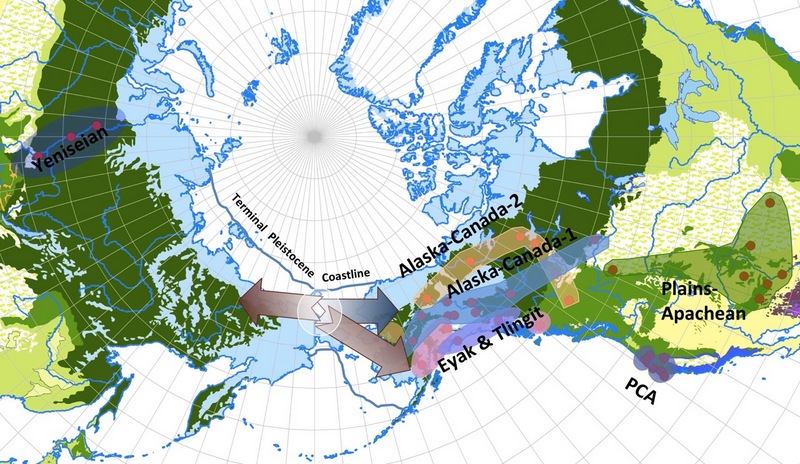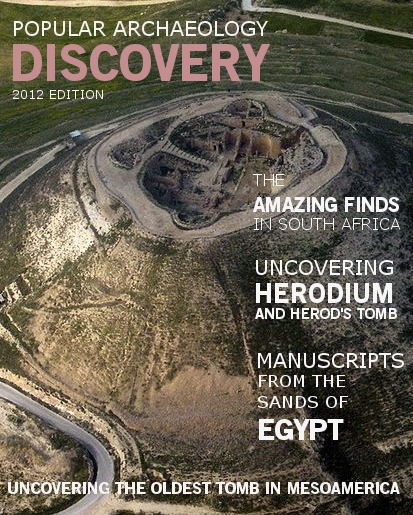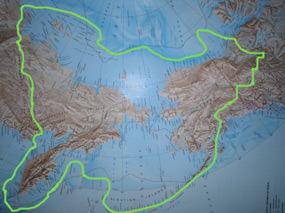Language Study Lends Support to Native American ‘Out-of-Beringia’ Theory
New linguistic evolutionary analysis supports a relationship between Native North American and Siberian languages.
Researchers who have conducted a new comparative phylogenetic study of the Yeniseian language group of Siberia and the Na-Dene languages of North America are shedding new light on our understanding of ancient migration patterns of people between Asia and North America thousands of years ago, suggesting that Native American origins may be somewhat more complex than a one-time, direct eastward migration of people out of Asia into North America via the Bering Land Bridge.
As related in a paper* published in the open-access journal PLOS ONE on March 12, 2014 by Mark Sicoli from Georgetown University and Gary Holton from University of Alaska Fairbanks, the researchers applied a phylogenetic analysis method that was previously developed to investigate human evolutionary relationships, a technique that involves constructing a “tree” to indicate ancestral relationships based on shared traits. Using 40 languages that diffused across North America and Asia, they coded a linguistic dataset from the languages, and then modeled the relationships between the data. They then modeled the results against two popular migration patterns that have been proposed by scientists, one involving a simple direct migration from Asia to North America across the Bering Land Bridge, and an alternative that proposes a multi-directional radiation of people into Asia and North America out of Beringia, a landmass that once existed, connecting North America with Asia during the Pleistocene ice ages.
Their results supported the latter hypothesis. Said Sicoli, “We found substantial support for the out-of-Beringia dispersal adding to a growing body of evidence for an ancestral population in Beringia before the land bridge was inundated by rising sea levels at the end of the last ice age.” They cite a DNA study outlined in a recent Perspective article in Science magazine by John Hoffecker of CU-Boulder’s Institute of Arctic and Alpine Research (see Before They Were Native Americans, They Were Native Beringians published in Popular Archaeology) wherein a similar theory is advanced, suggesting a 5,000 – 10,000-year “Beringian Standstill” of people in the ancient, now inundated Bering Land Bridge area before their early coastal migration into North America and back-migration into Asia.
_______________________________

This polar projection map of Asia and North America shows the approximate terminal Pleistocene shoreline. The center of geographic distribution of Yeniseian and Na-Dene language is in Beringia. From this center burgundy arrows extend toward the North American coast and into Siberia. A blue arrow indicates Interior dispersals of Na-Dene. Credit: Mark A. Sicoli; doi:10.1371/journal.pone.0091722.g004
_____________________________________
The study authors emphasize that this research does not weaken the popular paradigm of people entering the New World out of Asia across the Bering Land Bridge, but it does suggest that the migration was not a simple, unidirectional event from Asia into North America. They also suggest that, going forward, more phylogenetic studies and evolutionary modeling such as this can be useful in studying ancestral origins.
__________________________________________
* Sicoli MA, Holton G (2014) Linguistic Phylogenies Support Back-Migration from Beringia to Asia. PLoS ONE 9(3): e91722. doi:10.1371/journal.pone.0091722.
__________________________________________
Cover Photo, Top Left: Map showing greatest extent of Beringia.
__________________________________________
Read about the most fascinating discoveries with a premium subscription to Popular Archaeology Magazine. Find out what Popular Archaeology Magazine is all about. AND MORE:
 On the go? Purchase the mobile version of the current issue of Popular Archaeology Magazine here for only $2.99.
On the go? Purchase the mobile version of the current issue of Popular Archaeology Magazine here for only $2.99.
And, Popular Archaeology’s annual Discovery edition is a selection of the best stories published in Popular Archaeology Magazine in past issues, with an emphasis on some of the most significant, groundbreaking, or fascinating discoveries in the fields of archaeology and paleoanthropology and related fields. At least some of the articles have been updated or revised specifically for the Discovery edition. We can confidently say that there is no other single issue of an archaeology-related magazine, paper print or online, that contains as much major feature article content as this one. The latest issue, volume 2, has just been released. Go to the Discovery edition page for more information.
Subscription Price: A very affordable $5.75 for those who are not already premium subscribers of Popular Archaeology Magazine (It is FREE for premium subscribers to Popular Archaeology). Premium subscribers should email [email protected] and request the special coupon code. Or, for the e-Book version, it can be purchased for only $3.99 at Amazon.com.

 On the go? Purchase the mobile version of the current issue of Popular Archaeology Magazine here for only $2.99.
On the go? Purchase the mobile version of the current issue of Popular Archaeology Magazine here for only $2.99.



